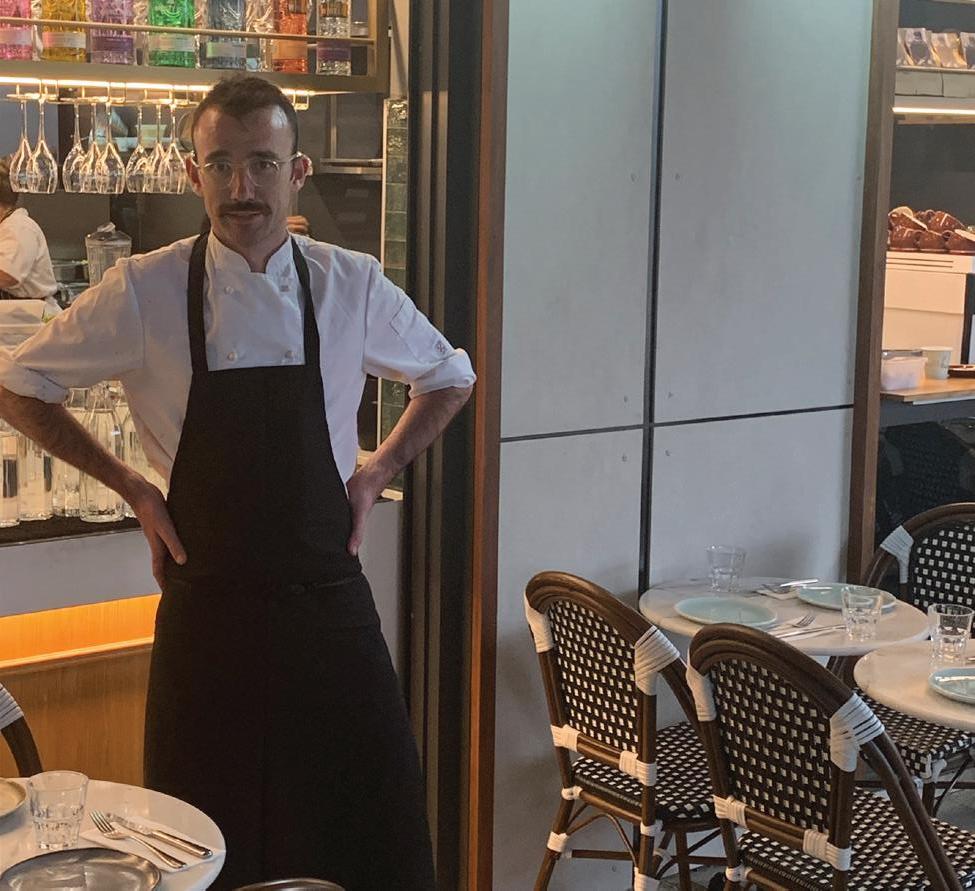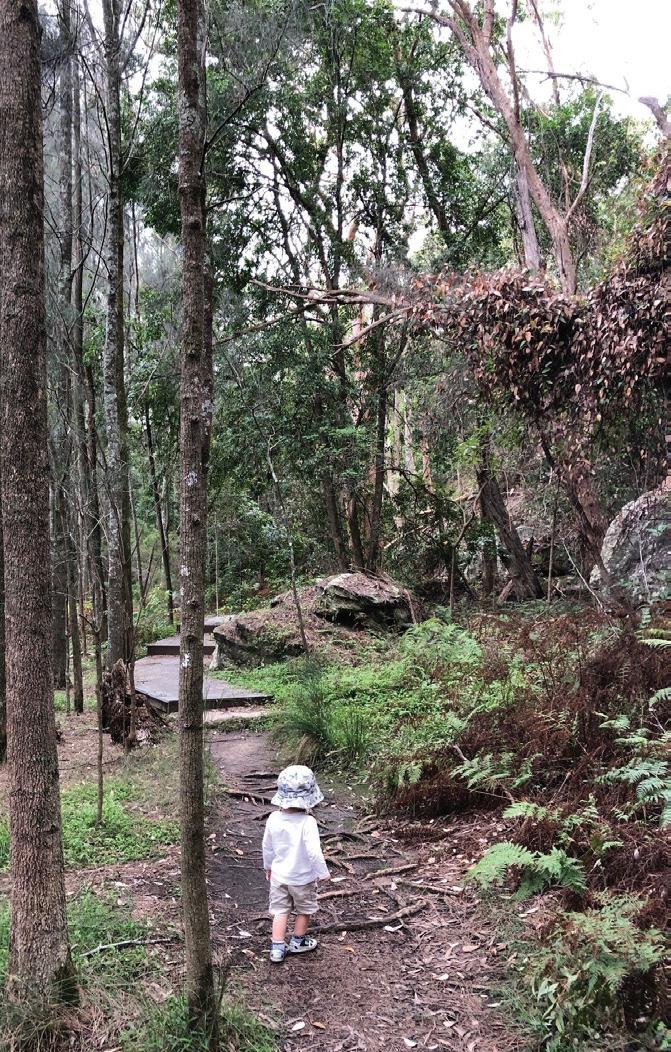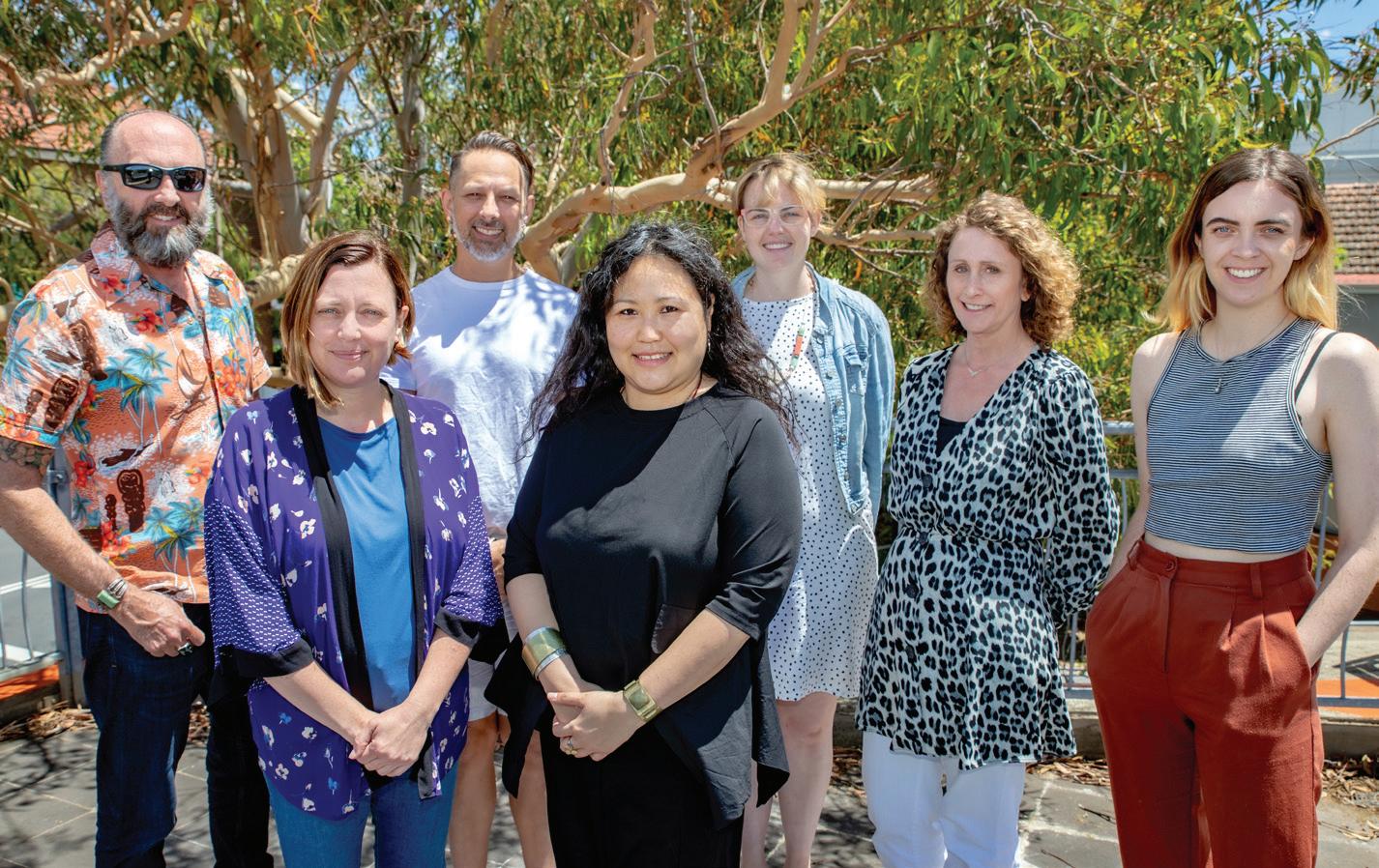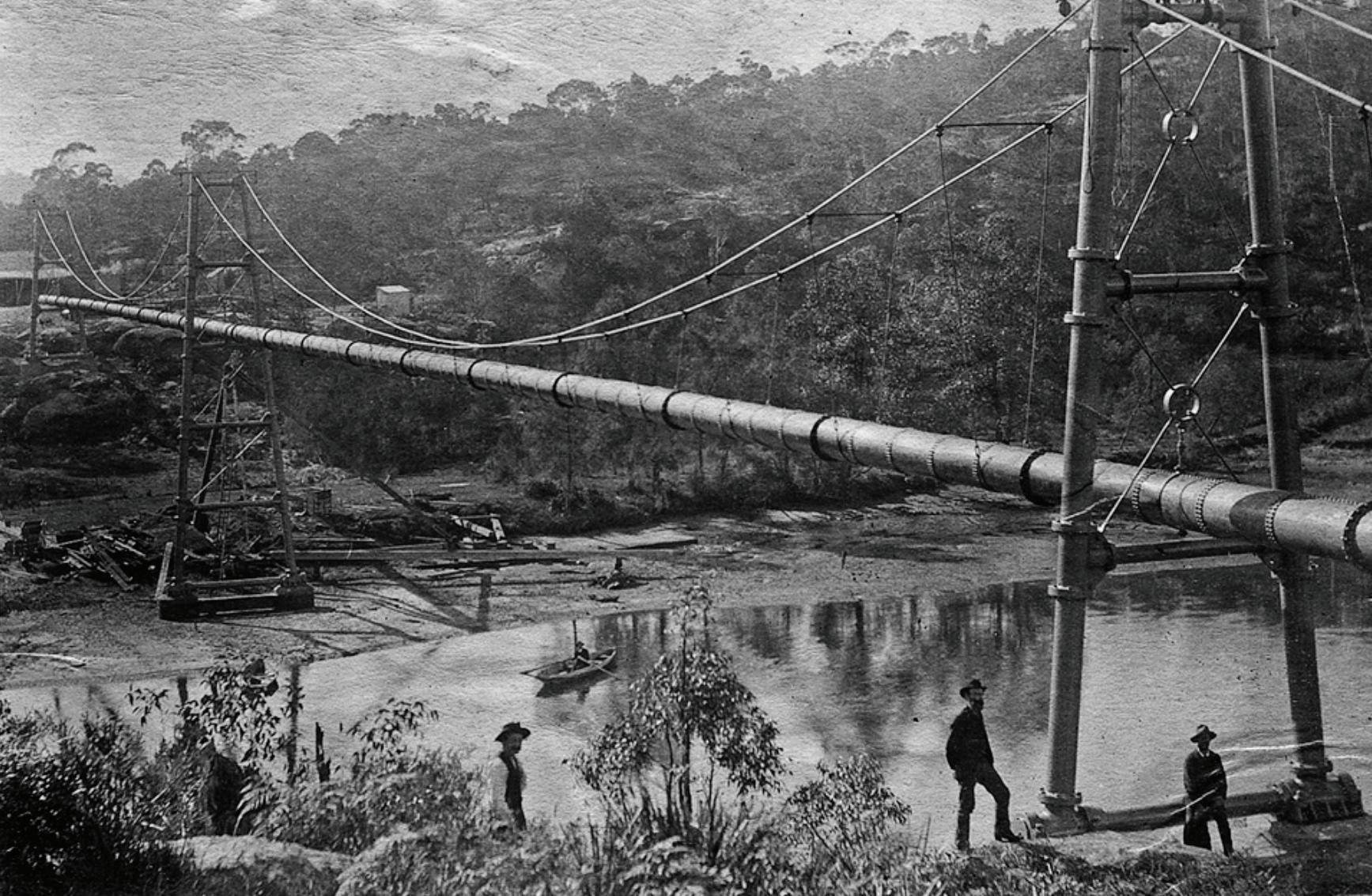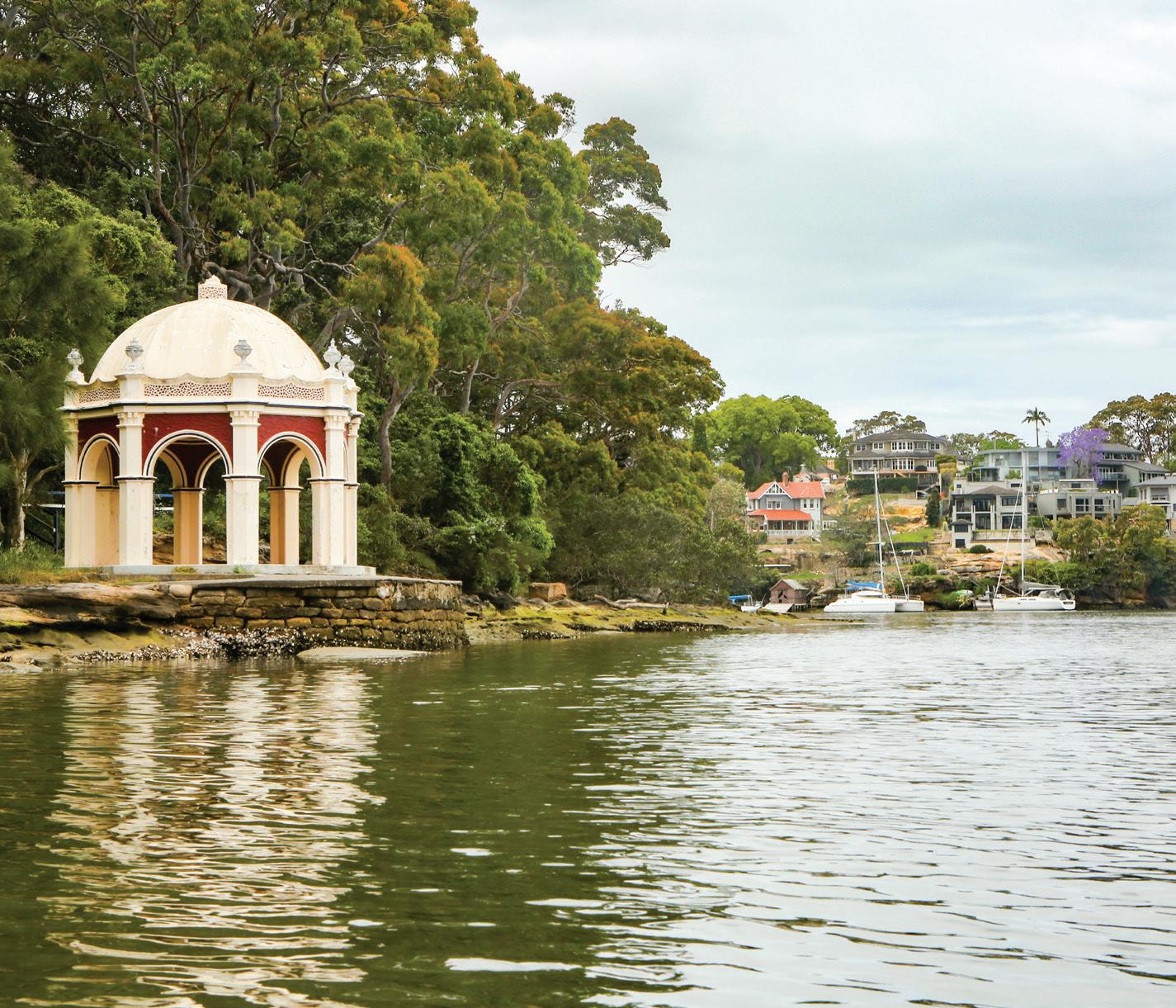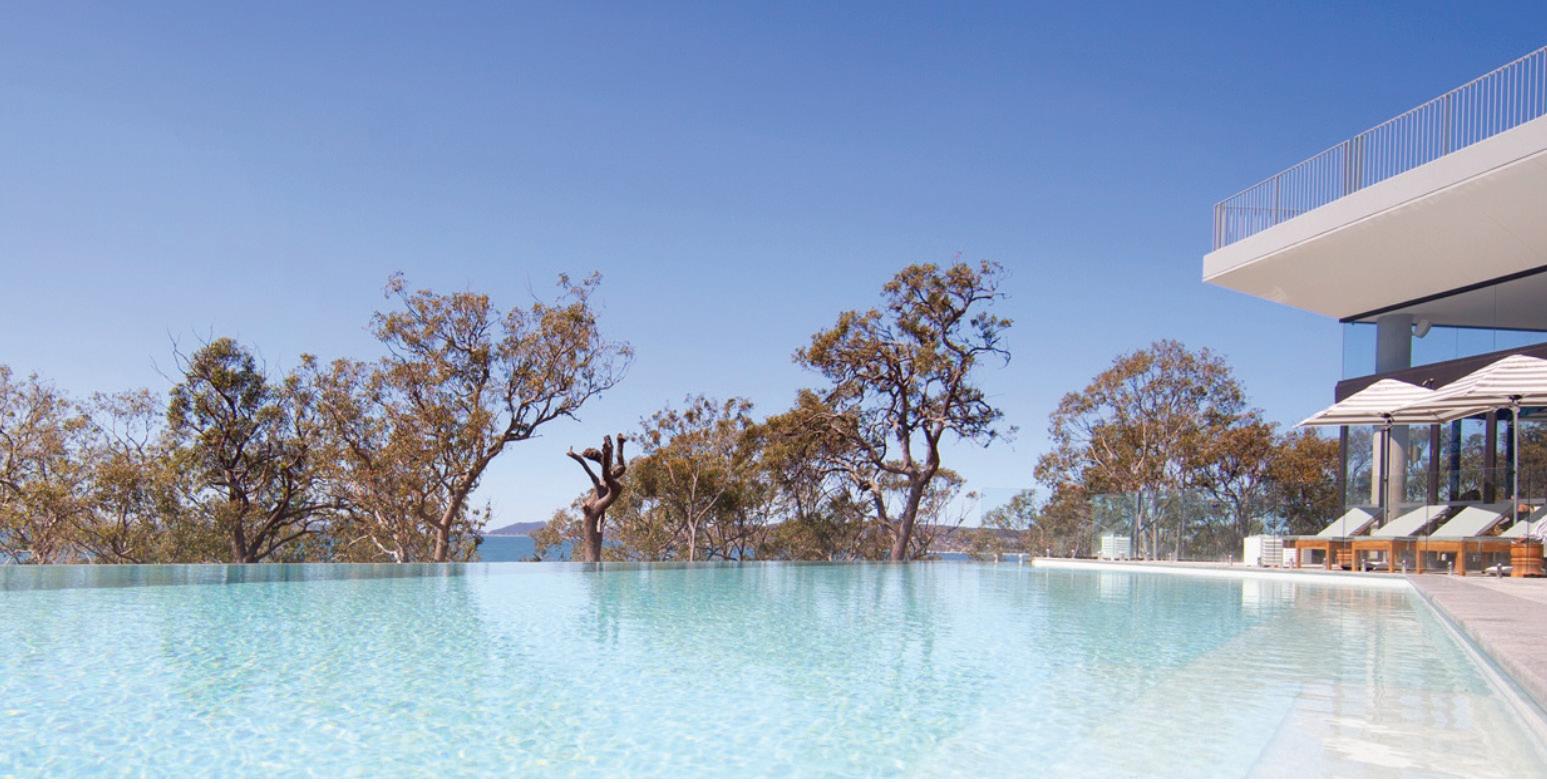HISTORY
TIMBER +
BLOOD By Alec Smart
Image: Construction Suspension Bridge For Water Pipes, Lane Cove River 1890
F
At the end of the 18th century, British colonists crossed the harbour from their Sydney Cove settlement and began harvesting timber around the lower reaches of the Lane Cove River – which the Indigenous Cammeraygal people knew as Turrumburra. FOR millennia the Cammeraygal resided in sandstone caves and bark humpies across Lane Cove’s five ‘fingers’ - the peninsulas now known as Linley Point, Riverview, Longueville, Northwood and Greenwich - in close proximity to the seafood they gathered along the shoreline or caught in the tidal waters. Over 40 Aboriginal sites have been recorded in Lane Cove National Park, including axe-sharpening grooves in rocks, assorted shelters, shell middens, cave art and rock engravings. Unfortunately, the British settlers’ encampments and (from 1794) land grants inevitably drew them into conflict with the natives as they competed for resources. Eucalypts – blackbutt, bluegum and stringybark – and hardwoods including red mahogany and yanderra (turpentine) were felled by the new arrivals for the construction of boats, furniture, fencing and houses. In the freshwater estuaries feeding the river, grasses were cut for roofing thatch and animal fodder. Shells gathered from centuries-old Aboriginal middens were burned to produce lime for mortar used in construction. Burns Bay Road in Linley Point began as a bullock cart route to enable former convict William Henry to transport timber from his 1000-acre forest leasehold to boats on the river. Tragically, a 1789-90 outbreak of smallpox decimated the Indigenous populations around the Sydney basin.
04
In 1790 a military fort was constructed at Woodford Bay, occupied by a garrison of marines, and for the next three decades they waged war on the remaining Aborigines, including Pemulwuy, the fearless resistance leader thought immune to bullets. In 1797 the Secretary of the Colony recorded that Aborigines were ‘exceedingly troublesome to the settlers in the Lane Cove area.’ In April 1816, the autocratic Governor Lachlan Macquarie, infuriated by the growing Indigenous resistance to European settlements expanding out from Sydney Cove, ordered a 23day military mission to resolve the issue. His soldiers were instructed to capture any Aboriginal peoples they encountered, from Lane Cove west to the Nepean and Hawkesbury rivers, and shoot dead all resisters. This resulted in at least one recorded massacre. Thereafter, British business interests in the Lane Cove region expanded rapidly, with the arrival of dairy farms, orchards and piggeries, after the forests were cleared. Roads soon traversed the steep ridges down to the waterfront wharves, enabling easy transportation of goods to Sydney town. In 1831, the headland of Longueville (which wasn’t named until 1924), became the site of one of Australia’s first manufacturing industries with the production plant for Rupert Kirk’s soap and candles.



